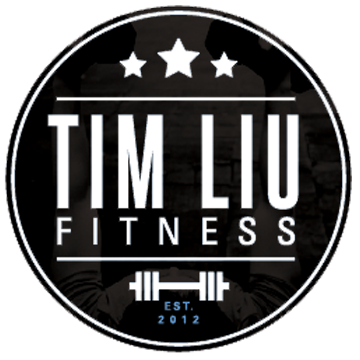Our posture is negatively affected everyday by what we do, especially today. Most of us sit at a desk working on a computer without getting up for way too long. Not only that, we now live in a mobile world where we are constantly hunched forward looking at our phones scrolling through social media, checking the news, or swiping left and right on Tinder.
Long periods of sitting with poor posture leads to neck, shoulder and lower back pain. Why? Because your shoulders start rounding forward, and your pecs and hips get tight. How many times have you had nagging pains in those areas from bad posture? I know I’ve had plenty.
Of course, when we think of good posture, we imagine standing erect with our chest tall and shoulders back like a soldier all the time. However, that’s just not realistic. Yes, you should stand up straight but the body is meant to bend, twist, and move in different ways and some slouching from time to time is normal. The key to having good posture is not only being consciously aware of how we sit and stand, but to maintain and improve our flexibility and mobility in our thoracic spine (upper back). Along with improving our mobility, we need to also strengthen our posture muscles.
With that said, everyone needs posture work. Because we spend so much time in a head-forward, slouched position, our posture muscles in the upper back and rear delts get stiff and weak, which means we need a lot more pulling than pushing exercises to restore that balance. Horizontal pulling exercises in the form of row variations would be the ideal way to accomplish this.
Now pulldowns and chin-ups are fantastic vertical pulling exercises to build your lats, but one of the primary functions of the lats is to internally rotate your shoulders, which is what we don’t need more of. So at least in the beginning while we regain the balance, it should be kept to a minimum.
A tool to help reverse some of that sitting and slouching is the foam roller. I love using it to open up my thoracic spine and to release tension in my lats. If you have a hard time raising your arms over your head without compensating with your lower back, then I highly recommend using the roller. Here’s how:
Along with extension, our thoracic spine is involved in rotation as well. Here are three drills that my clients and myself use to improve mobility. Incorporate these into your warmup:
After you stretch out and open up your upper back, it’s time to move onto waking those muscles up. We want to build stability and strength in the mid-low traps, rhomboids, teres major, and rear delts. The following exercises are my favorite:
1. Band Pull-Aparts with External Rotation – This should be done every time you work out. The pull-aparts help strengthen your upper back muscles and also gets those shoulders pulled back. Got rounded shoulders? Aim for multiple sets of 10-20 reps.
2. Rope Face Pulls – One of the best exercises you can do to strengthen your rhomboids and rear delts. Set up a cable pulley to about chest height with a rope attachment. Get into a split stance for balance, and pull the rope towards your face, flaring the elbows back at the end of the motion. Squeeze the back of your shoulders and your shoulder blades together before returning to the starting position. Don’t have access to a gym? You can do the same thing with a band.
3. Band Reverse Fly - To perform the exercise, start by wrapping the band around a beam or bar. Keeping your arms completely straight, pull them back towards you with your arms out in a T shape, squeezing the back of your shoulders at the end of the movement.
4. Dumbbell Bent Over Lateral Raise - Start by grabbing a light pair of dumbbells and sit on a bench. Keeping your back straight, bend slightly forward with your dumbbells in front of you. Drive the dumbbells up towards the ceiling, squeezing your shoulders hard at the top for a second. Resist on the way and get a full stretch before performing another rep.
If that position feels uncomfortable, you can also do the same movement but with your chest supported on an incline bench.
To put it all together, here is a sample posture improving workout for you to do:
Warmup:
Foam Rolling (T-spine extensions, lats)
Brettzel stretch
Workout:
A. Band Pull-Aparts – 3 sets of 20 reps
B. Rope Face Pulls – 5 sets of 15 reps
C. Wide Grip Cable Rows – 4 sets of 10-12 reps
D. Bent Over DB Lateral Raise – 4 sets of 20-25 reps
If you’re doing these exercises for the first time, don’t just move from Point A to Point B. We actively want to feel the muscles work throughout the whole set. So slow down the tempo and get used to the feeling of the muscles squeezing and stretching while you’re going through the full range of motion. Also, avoid hiking your shoulders up so that your neck and upper traps aren’t kicking in.
In Closing
In order to improve your posture, you must regain and maintain your flexibility and mobility in the thoracic spine through extension and rotation. Along with improving the mobility, we need to strengthen the muscles of the upper back and the rear delts. Once you’ve gained the strength in those muscles, your posture will improve and you should have less pain in your neck and upper back.
Got any questions? Ask away in the comments section below.

